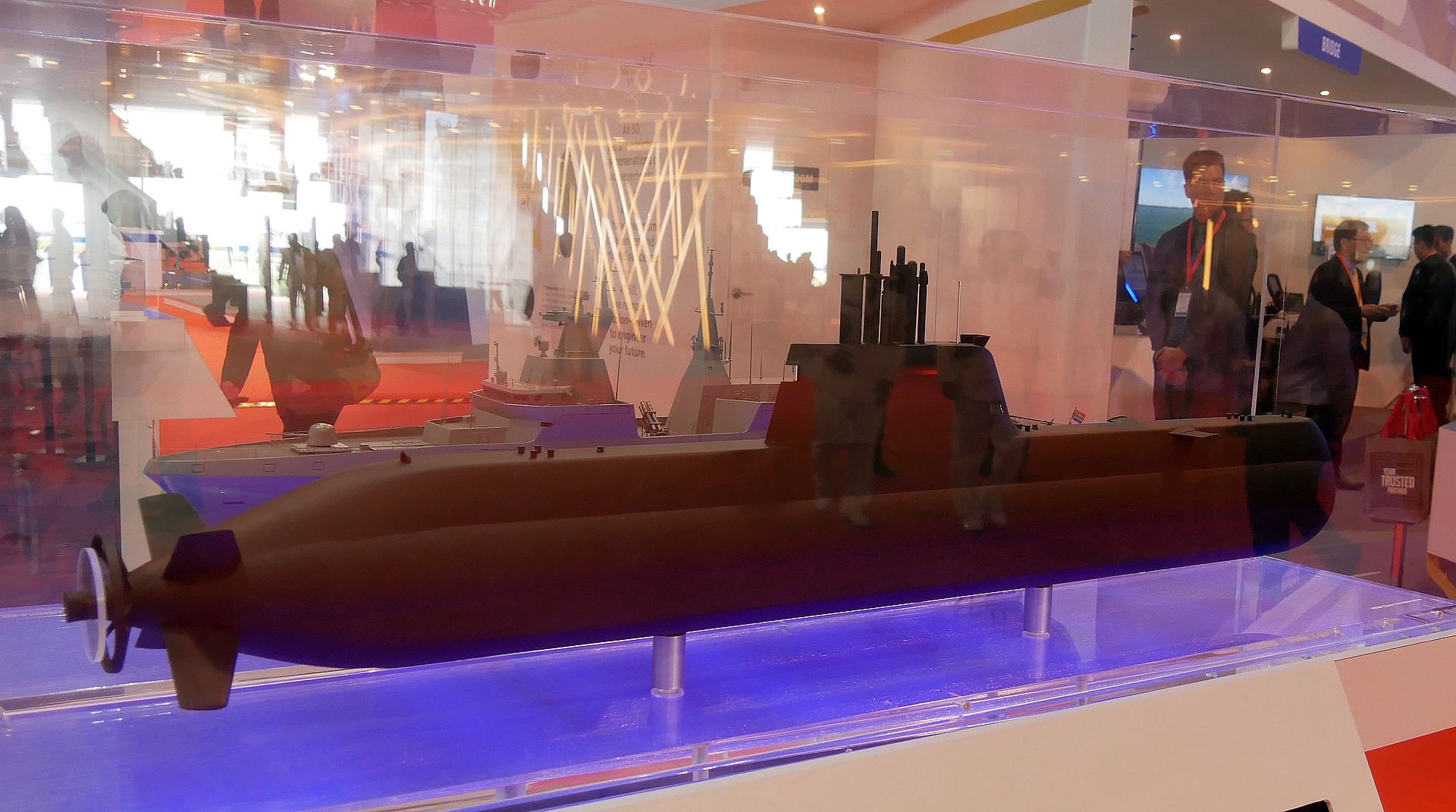
SHAH ALAM: The Joneses, Singapore launched two subs. Singapore PM Lee Hsien Loong officiated the launch ceremony of two Republic Singapore Navy (RSN) submarines – Impeccable and Illustrious – in Germany on December 13. The first of the four submarines order – Invincible – was launched in 2019. The three submarines are expected to be delivered to Singapore next year.
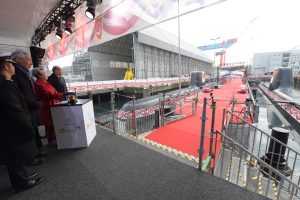
From Singapore Mindef:
Prime Minister (PM) Lee Hsien Loong officiated the launch ceremony of the Republic of Singapore Navy (RSN)’s second and third Invincible-class submarines, Impeccable and Illustrious, at thyssenkrupp Marine Systems (tkMS) shipyard in Kiel, Germany on 13 December 2022. The submarines were launched by Mrs Lee Hsien Loong, who, as the spouse of the officiating officer, was the Lady Sponsor. German Federal Chancellor Olaf Scholz attended the launch ceremony as an honoured guest, at the invitation of PM Lee. The ceremony was also witnessed by Minister for Defence Dr Ng Eng Hen, Minister for Foreign Affairs Dr Vivian Balakrishnan, Chief of German Navy Vice-Admiral Jan Christian Kaack, RSN’s Chief of Navy Rear-Admiral Aaron Beng, CEO tkMS Oliver Burkhard, Chief Executive Defence Science and Technology Agency (DSTA) Mr Mervyn Tan, and other senior defence officials from both countries.
Emphasising the importance of the submarines during his address at the ceremony, PM Lee said, “Singapore is a maritime nation and we are highly reliant on the free and unimpended movement of goods and services across the sea for our prosperity and indeed survival. The RSN has the crucial mission of keeping our Sea Lines of Communication open. Submarines provide the RSN an added capability to fulfil its role.” Expressing optimism for the warm and growing defence relations between Singapore and Germany, he added, “Our collaboration on this strategic capability underscores the depth of partnership and the trust between our navies and our defence industries. I am confident that the relationship between Germany and Singapore will grow from strength to strength, and I look forward to more meaningful interactions between our militaries.”
The Invincible-class submarines are custom-designed for operations in Singapore’s shallow and busy tropical waters, and they possess longer endurance and higher payloads. Following the launch, Impeccable and Illustrious, will undergo a series of sea trials before delivery to Singapore. The first submarine Invincible was launched in 2019, while the fourth submarine Inimitable, remains under construction.
The launch of the two submarines, despite the challenges posed by COVID-19, underpins the resilience and readiness of the SAF, RSN and DSTA. It marks a key milestone in the RSN’s submarine modernisation journey. The launch is also testament to the warm and growing defence ties between Singapore and Germany, underpinned by the signing of the enhanced Defence Cooperation Agreement in 2018. Both countries cooperate and interact widely through high-level visits and dialogues, military exchanges and training, cross-attendance of professional courses, and in areas of mutual interest, such as in defence technology and cyber.
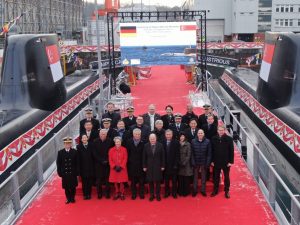
For more on the new RSN submarines go here.
— Malaysian Defence
If you like this post, buy me an espresso. Paypal Payment

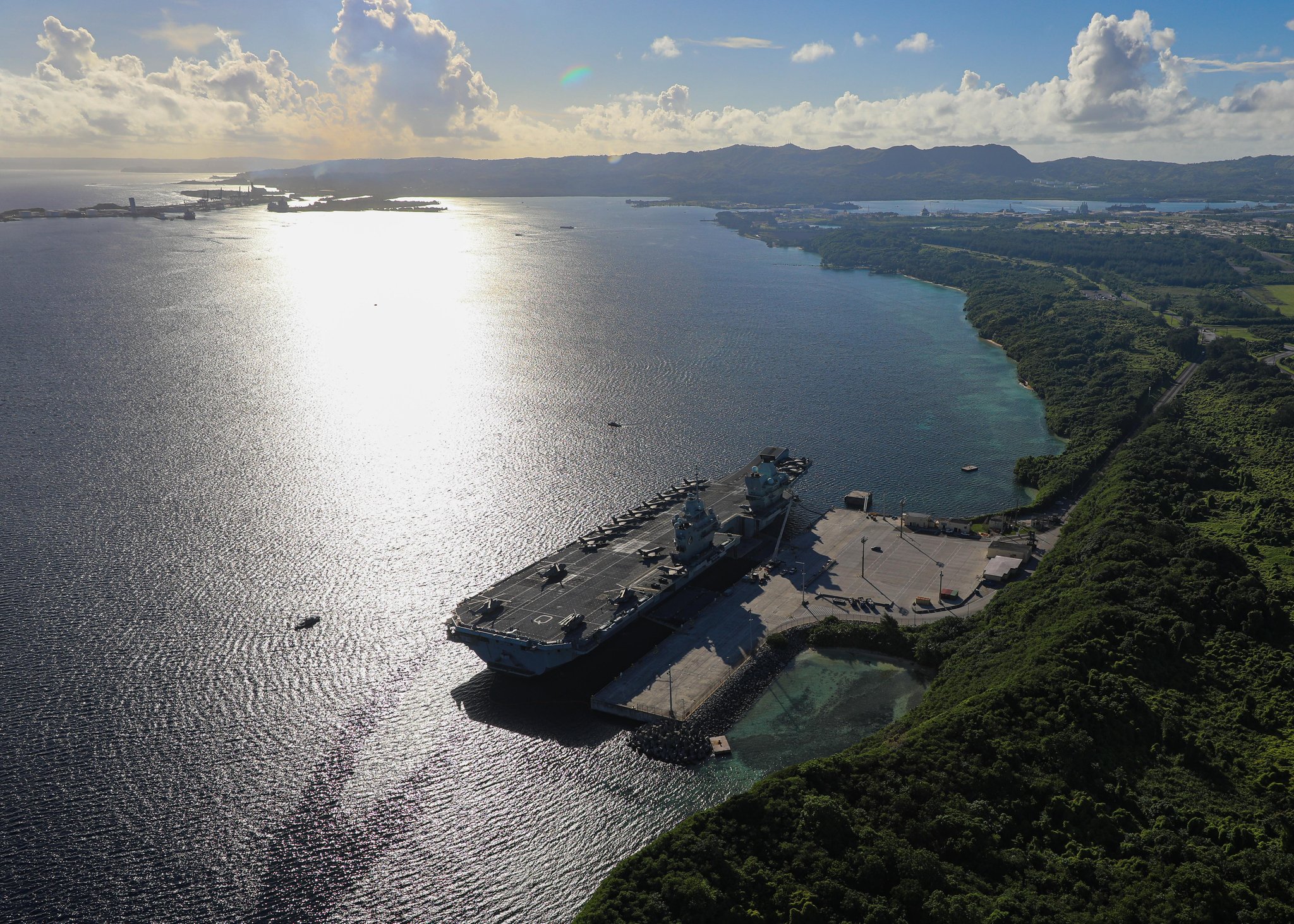

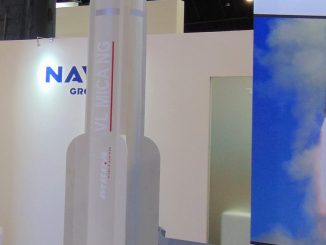
We need to buy more submarine. At least another ten. With more modern & longer operation period for those submarine.
nalzar – ”At least another ten.”
Does the shore support infrastructure and manpower – never mind the cash – come from Father Christmas? You have any idea as to the level of resources needed to sustain 10 subs and the resources we utilise just to operate a pair?
Speaking of subs, do ours strictly operate within the SCS and eastern fleet or are they also required to patrol the peninsular aswell?
no idea
Jason Lo – ”Speaking of subs, do ours strictly operate within the SCS and eastern fleet or are they also required to patrol the peninsular aswell?”
Let’s look at the facts as they stand or as we know them.
– The Melaka Straits for the most part is too shallow.
– The South China Sea has deep sea in various areas [still within the continental shelf] and is where the Spratlys are; an area of vital importance and concern for us.
– The last time we heard of the subs being in the Peninsular is when they returned from France; on their way to Sepanggar they made a brief stopover.
And every LIMA
2 units in one launching ceremony. Save money for the singaporean after forking billions to buy the sub. Are they equipped with cruise missiles?
No idea
Blue Spear comes to mind for the Sub “cruise missile”
So looking at the facts, where does the singaporean subs play?
British & Australian subs in the 50s, 60s and 70s used to ply around Langkawi and Tioman
This is HMS Finwhale in April 1970 at Tioman. This sub is bigger than our current Scorpene.
https://pbs.twimg.com/media/FJxroghWQAEPCJ5.jpg
Rather than having conventional submarines, tied to fixed replenishment locations, RMN could pursue smaller submarines that could be replenished by OSVs acting as a submarine tender anywhere. Distributed lethality.
https://pbs.twimg.com/media/FRaohpoacAAhO2R.jpg
https://pbs.twimg.com/media/FbYZADuWQAAK9NW.jpg
3 thing to note for TKMS sub.the 218sg is largest build so far…1) propeller noise diffuser and 2) multi purpose vertical locks and 3) weapon luncher.
Wong – “So looking at the facts, where does the singaporean subs play”
Based on the “facts” the plainly obvious answer is not in the Straits of Melaka but in the South China Sea mainly.
No sub transits the Straits of Melaka mostly submerged for the simple reason that much if the area is too shallow. In some parts the water is so shallow subs can be seen from the air and in various parts of the Melaka and also the Singapore Straits subs have to surface. An alternative to the Melaka
Straits is the much deeper Sunda Straits.
In short our subs operate mainly in the east because conditions there are more ideal [note that every single bilateral multilateral exercise which has had sub participation is held in the South China Sea – I have compiled a list] and also because that’s where our strategic concerns are. That’s also where our only base with a shore support infrastructure for subs is located.
Wong – “British & Australian subs in the 50s, 60s and 70s used to ply around Langkawi and Tioman”
Those waters are deep [as you head westward from Langkawi towards the Andamans and Nicobar the water gets deeper] and so are the waters around Pangkor but by and large most of the waters on the West coast are shallow. East of Tioman as one heads towards Aur the water gets deeper.
BTW Kriegsmarine boats operated from Penang in WW2.
Wong – “RMN could pursue smaller submarines that could be”
This is an issue which has been dealt with on several occasions. Smaller subs have less endurance [which advances in tech mitigate but don’t obviate] and range; as well as less internal space to carry weapons and other things. Smaller boats also have less capable sensors.
There is a reason we selected boats of a certain displacement; why we don’t see a need for smaller boats and also why navies like the Bundersmarine which traditionally had small subs [Type 206s] have gone for slightly larger boats.
Wong – ” that could be replenished by OSVs”
– A tender can be any type; not necessarily a OSV.
– A larger sub can also be replenished. We don’t have to get smaller subs just so they can be replenished at sea.
– Given that our subs don’t operate for weeks on end at sea; replenishing them is not a concern [same reason we have no requirement for oilers which some erroneously insist we need]. If they had to operate for a longer period all ships/subs have reserve food/water/fuel.
@KC Wong
Asymmetrical warfare is NOT distributed lethality.
Like I said before better wait for the Turks to proof it and then see whether a midget subs or XLUUV is a better investment
Zaft – ”wait for the Turks to proof it”
As told to you before it has nothing to do with the Turks; mini subs [Cosmos comes to mind and before that the X Craft and others] have been operated for a longtime. They are not general purpose boats but for niche roles.
zaft- ” a midget subs or XLUUV is a better investment”
It’s like asking whether a GPMG is a ”better investment” compared to an assault rifle or if a 120mm mortar is ”better” than a 76mm mountain gun – tripe. Mini subs and other types of subs are intended for different things under different operational conditions – non are ”better investments”.
The other majaor items by RSN is 1) 6 MRCV friget or destroyer with 1st ship lunch in 2025 and all ships lunch by 2029-30 2) 2 JMMS LHD by 2030 and 3) OPVs or light friget for RSN Coast Guard unit by 2026.
Order book full for ST Marine
Azlan – “– Given that our subs don’t operate for weeks on end at sea; replenishing them is not a concern [same reason we have no requirement for oilers which some erroneously insist we need]. If they had to operate for a longer period all ships/subs have reserve food/water/fuel”
In the event of a hostility, Sepanggar Base would be the first to be hit by ballistic and cruise missiles. Having the ability to replenish submarines away from any harbour will increase the chance of our submarine fleet survival.
Why OSV and not other ships? Because we can get used OSVs cheaply, and it can be a true multipurpose platform, able to do patrol, support MCM operations, support SOF operations, as Mothership to small crafts (RHIBs, USVs, UAVs, UUVs), Submarine Mothership/replenishment, repair ship, HADR rescue and plenty of other tasks
Oilers if we have the budget, are useful assets not only to support our own forces, but also to support assets of forces friendly to our country.
Zaft – “Asymmetrical warfare is NOT distributed lethality”
2 subs – asymmetrical warfare
2 subs + 8 small littoral subs – asymmetrical warfare AND distributed lethality.
Power density of new and future battery packs mean that small submarines now could have nearly the same range of larger conventional submarines. For example DRASS DG-550 submarine has a planned range of 4,000nm, with a 260nm range on batteries only.
Wong – “Sepanggar Base would be the first to be hit by ballistic and cruise missiles”
If we reach a stage where Seoanggar is hit then we are buggered anyway; having the ability the replenish at sea our two boats won’t make much of a difference in the overall scheme of things. A destroyed base also means destroyed shore facilities which a tender can’t assist with.
To be a devil’s advocate what if dozens of mines are laid off the base or someone places UUVs to detect and shadow our boats as they leave. We can’t cater for every contingency.
Wong – “Power density of new and future battery packs mean that small submarines now could have nearly the same range of larger conventional submarines”
You’ve mentioned before. Or was it ..’ who did. Doesn’t change the fact that anything smaller than what we currently have will have severe internal limitations to carry weapons and other things and will have a less capable sensor suite.
Wong – “Oilers if we have the budget, are useful assets not only to support our own forces”
A lot of things are “useful” but for reasons which have been.done to death we have no requirement for oilers due to geography and requirements. If we “have the budget” far more useful things we can get.
Wong – “2 subs – asymmetrical warfare
In theory but in eakort the problem is the idea of “asymmetric warfare” gets thrown out the window when the other side has a numerical advantage in various things; has subs in the area; mines and surface groups; is expecting us to conduct “asymmetric warfare”; as well as having his own understanding of “asymmetric warfare”. The enemy too has a say.
Azlan – “In theory but in eakort the problem is the idea of “asymmetric warfare” gets thrown out the window when the other side has a numerical advantage in various things”
We could never beat the numerical advantage of countries that have bigger defence budget than us. The only way is hedging our bets on something that can survive the enemy effort the longest.
When you compare say 8 LMS Corvette to 8 small submarines like the DG-550 or the STM 500, submarines would probably survive longer and be able to strike back at the enemy. Any peacetime mission that a LMS could do, can be done by MMEA OPVs that should be much cheaper than RMN LMS Corvette.
hulubalang – ”We could never beat the numerical advantage of countries that have bigger defence budget than us. The only way is hedging our bets on something that can survive the enemy effort the longest.”
Nobody suggested we can ”beat the numerical advantage of countries that have bigger defence budget than us” or that the the whole RMN fleet sorties out for a major decisive engagement off Layang Layang against the PLAN’s South Seas Fleet others who have a penchant for asymmetric warfare as if it’s a panacea; in actuality the enemy too can practice it; he too understands it and the resources he can put into place can prevent us from successfully conducting asymmetric warfare.
hulubalang – ”small submarines like the DG-550 or the STM 500, submarines would probably survive longer and be able to strike back at the enemy”
I’ve head all these arguments time and time again. Like watching circus seals performing the same acts over and over again. Instead of just focusing on the plus points; also look at the limitations of small subs in order to have a balanced and not a skewered one sided picture. Again; small subs are great but they still have inherent limitations which tech advances mitigate but not obviate and there are legitimate reasons why the RMN and others have not gone for smaller subs….
hulubalang – ”can be done by MMEA OPVs that should be much cheaper than RMN LMS Corvette.”
So I keep hearing time and again.
Let’s look at the pertinent facts as they stand shall we.
– The LMS has both wartime and peacetime missions but its primary purpose is not peacetime missions; why the RMN is adamant that the Batch2s are fully fitted out.
– Until or unless the MMA is properly funded and has enough assets and support infrastructure; the RMN is the only entity able to prop up the MMEA.
– It’s not as if the RMN is reluctant to allow the MMEA to fully carry out all it’s allocated responsibilities.
– The RMN has no intention of getting any assets whose primary purpose is peacetime enforcement. The follow on Kedahs in the 5/15 were intended to be fully fitted out and not for performing peacectime constabulary type but as it stands there are no plans for follow on Kedahs – dead as a Dodo or Elvis.
– Even if the MMEA had 500 OPVs; the RMN [like all navies] would still have peacetime taskings.
Hulubalang “We could never beat the numerical advantage of countries that have bigger defence budget than us. The only way is hedging our bets on something that can survive the enemy effort the longest.”
Nope.
What we need is a defense posture that emphasis partnership & multilateralism. One that emphasis military interoperability & interchangeability with other like minded countries
Dealing with PRC on a unilateral basis is exactly what they wanted and what benefits them the most.
Zaft – “One that emphasis military interoperability & interchangeability with other like minded countries”
So what kind of things should we have to defend our maritime interests that could have interoperability & interchangeability with other like minded countries? Something that is within the means of our little budget?
What kind of vessel that would be the most survivable in the era of tracking with real time satellite multispectral imaging?
We’ve been down this road before on a few occasions.
How “survivable” anything would be depends on the operational environment; can’t be viewed in absolutes. If there was no element of surprise and an opponent had his own subs in the area; as well as surface and air assets and maybe mines and was expecting us to deploy subs how on earth would our subs be in a “survivable” environment?
Also, with only a two boats the RMN would be very selective in deciding where and where to deploy them. In theory it looks great but in reality things are much more complicated than you [or anyone else] would have us believe. Another factor is that it’s often not subs by themselves which enable the results but subs in combination with other assets. As pointed out before, History is also full of examples where one does not have to physically destroy a sub but to prevent it from doing its job.
A balanced and sobered non passionate assessment of anything would include not only the plus points but all other factors as well.
Zaft – “One that emphasis military interoperability & interchangeability with other like minded countries”
We have interoperability with certain countries but there is a limit given we are not in any binding alliance. With conetries such as Thailand and Indonesia we do the bare basics – being able to communicate with each other and being able to fight alongside each other are different things. Note that our sub rescue vessel is certified the work with USN subs.
In short there is a limit to how much
interoperability we have and and intend to achieve due to various factors; to take things to the next level is policy decision. Even within the MAF there are still
jointness/interoperability issues and here we are talking about interoperability with foreign countries.
The only regional country that has almost full interoperability with the U S. is Singapore; followed by Thailand and the Philippines.
In the event trouble breaks out in the South China Sea and we are involved: our lack of resources and interoperability means we will operate on the periphery rather than be a hindrance to the U.S. and Australia.